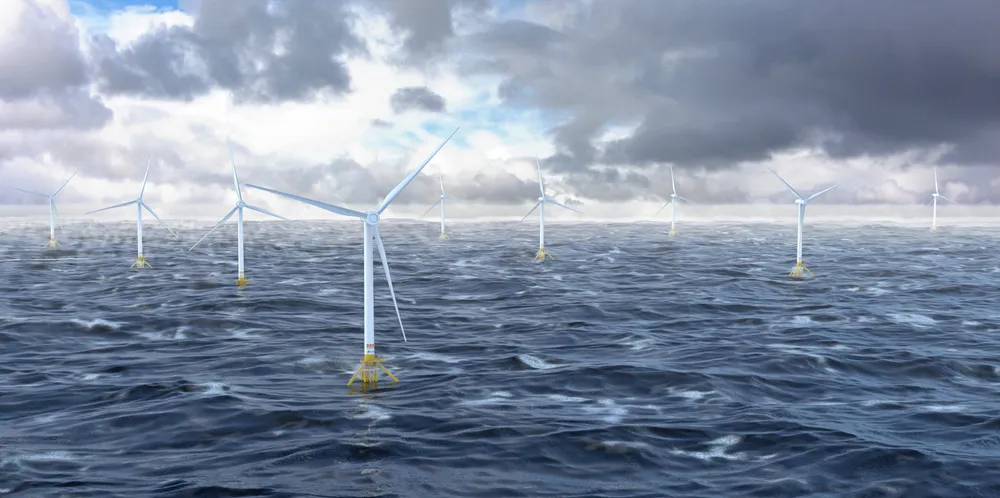Offshore oil player SBM launches new-look floating wind design with eye on Norwegian pilot
Transitioning energy contractor unveils slimline tension leg platform concept with plans to have 16MW prototype moored in North Sea ahead of deepwater auctions

Details of the pilot project for the Float4Wind design, a steel tension-leg platform (TLP) for water depths of 100-2,000 metres, were limited, with the company confirming only that it was “subject to sanctioning and would be [developed] together with a partner” a site in the North Sea where waters are some 200 meters deep.
The concept – a second-generation design from SBM, a veteran in the oil & gas industry’s floating market that is supplying its mark-1 design for EDF’s in-development Provence Grand Large array off France – has been engineered for manufacturability, with inclined tension legs designed to reduce nacelle motions to boost turbine output from a smaller marine ‘footprint’.
Severine Baudic, managing director of SBM New Energies, added: “Oil & gas expertise brings a lot of value to the offshore wind industry. It’s a natural evolution in our journey. We have lots of competencies that we can import from those decades of designing, building [in the floating oil market], the execution and fabrication of complex projects.
“Designing to cost [is the rationale] behind of this platform. And we been fortunate to already be able to incorporate return on experience from our first floater [for PGL], to drive the LCOE [levellised cost of energy] down.”
Christian Bauduin, SBM’s renewables technology manager, said: “TLPs as structures are much more stable – which ‘look’ almost like fixed [foundations] – and it was really at the requests of the turbine suppliers [that SBM was in dialogue with] to have a system like that [because it means] a turbine on our TLP will produce as efficiently as on a fixed [foundation].
As reducing the cost of floating wind power hinges centrally on serial production of the platforms, with 50-100 units need to be fabricated for giga-scale arrays, the Float4Wind was fashioned with a “de-risking” eye on the units being build for PGL and how steel costs could be cut.
“We needed be sure that we developed a TLP that based on our knowledge was robust [technologically]… but that in terms of optimization and cost and long-term targets for the production of a commercial [floating wind] farm, we had to make improvements to deliver [large numbers of platforms for future projects],” said Bauduin.
Baudic added: “We believe this [TLP] will meet the market needs in terms of fabrication in large quantities and [low] cost. The design is simple, which means the supply chain is simple, assembly is simple… and project execution [for developers] become more predictive and simpler.
“This is design is also versatile insofar as it can be built in many geographic locations, to meet local content requirements.”